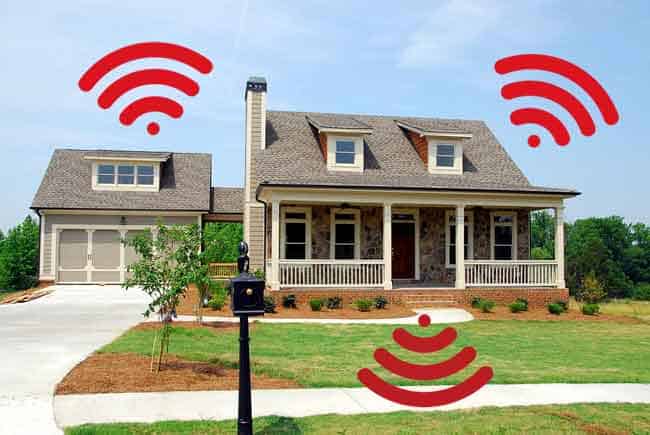EMFs are impossible to avoid with so many cell towers and devices around us. When the devices around us emit these harmful EMFs, our body absorbs them, which is dangerous.
Prolonged exposure to EMF radiation can lead to serious health issues in the future, such as the development of different types of cancer. Those who work in IT or are electrosensitive can experience migraines, dizziness, nausea, and similar symptoms due to EMF radiation.
Because EMF radiation is everywhere, it raises the question, what are safe EMF levels?

What Are Safe EMF Levels?
The recommended safe EMF levels are 0.5 mG, with the maximum being 2.5 mG. However, safe EMF levels should be at 1.0 mG or less. It is difficult to keep the exposure at these levels due to the number of devices and appliances in a single household that emit far greater EMF levels.
Safe EMF Levels for Humans
EMFs are everywhere, from cell towers to smartphones in your pocket. It is impossible to completely eradicate them. Recognizing these sources is still vital so that you can keep a safe distance from them.
Some scientists believe a safe EMF exposure level should be between 0.5 mG and 2.5 mG. Your risk of electromagnetic-related disease is modest at this rate, while the effects may differ based on your level of electrosensitivity.
Your kitchen, living room, bathroom, and bedroom devices and appliances may be releasing dangerous EMF radiation. Most households use laptops, cell phones, televisions, and vacuum cleaners daily or weekly in the home, all leading to a level of EMF being emitted.
Also read: How to Reduce EMF Exposure
The EMF levels of devices and appliances in your home
Despite the recommended EMF levels being up to 2.5 mG, the devices and appliances in your home often emit higher levels. This turns your household into a dangerous place to live in. Some of the devices you use emit EMFs at the following levels:
- Using a computer can expose you to 4–20 mG
- TVs have a 5-100 mG emission limit
- Vacuum cleaners emit between 230 mG and 1300 mG
- Radiation from lamps can range from 400 mG to 4,000 mG
- The power output of hair dryers can range from 60 mG to 20,000 mG
- Washers have a range of 8 mG to 200 mG
- You can receive radiation doses between 100 mG and 500 mG from microwaves
- Blenders measure high as well, emitting between 50 mG and 220 mG
- Coffee makers emit 6 mG to 29 mG

Types of EMF Fields
The EMF fields are divided into magnetic, radiofrequency, and electric.
Magnetic
The magnetic field represents the magnetic influence on moving electric charges, electric currents, and magnetic materials. Although there are different safety recommendations and ideas about what high EMF readings mean, the safest level to consider in terms of the magnetic field category is below 1 mG.
You might discover readings between 1 mG and 4 mG in your house. Since you spend most of your time in these areas, this is natural and safe. However, the likelihood is that your readings will be significantly greater if you live in an apartment building.
Radiofrequency
MilliWatt per square meter, or mW/m2, is the unit of measurement for radio frequencies. This sort of EMF radiation is the most dangerous and prevalent, especially considering that it is found in many of the everyday items you use.
These include cell towers, WiFi routers, smartphones, tablets, microwaves, and more. Readings above 1 mW/m2 are considered to be excessive and potentially harmful. There have already been reports of individuals having difficulty concentrating, headaches, behavioral issues, and sleep disturbances for readings of 03 mW/m2 and 5 mW/m2.
Electric
The electric field represents the one that surrounds electrically charged particles. Readings of electric fields are substantially less well-known and studied than readings of magnetic and radiofrequency fields. However, they still present a threat inside your house. Measuring electric fields is generally safe when they are less than 1 V/m.
A careful examination is warranted to determine whether adjustments may be made to lower readings between 1 and 5 volts per meter. Although there is no immediate danger within this range, electrosensitive individuals may still be affected.
It becomes dangerous, and it is time for you to take protective measures if the reading rises above 10 V/m or even goes as high as 50 V/m.
Types of EMF Radiation
EMFs can be divided into two major types according to their frequency, non-ionizing and ionizing. As you move away from the source of EMF, both in non-ionizing and ionizing radiation, your exposure and risk of adverse effects decrease.
Non-Ionizing radiation
Non-ionizing radiation is low-level radiation that many people believe to be safe for humans, but in actuality, it may also exacerbate health problems. Unfortunately, it is non-ionizing radiation that we are surrounded by because of the devices and appliances we use in and out of our homes.
Smartphones, tablets, computers, Bluetooth devices, wireless (WiFi) routers, power lines, smart meters, home energy meters, microwaves, and MRIs are a few examples of non-ionizing EMFs.
Ionizing radiation
On the other hand, ionizing radiation is a high quantity of radiation that can be extremely detrimental to your body. This radiation can be found in both natural and artificial environments. UV radiation is produced naturally by the sun, the Earth’s radioactive elements, radon gas, and cosmic rays that strike the planet outside the solar system.
Artificially, it is produced through tanning booths, laser therapy, welding torches, X-rays, gamma rays, cancer therapy, CT scans, and other human-made sources are also included.
Also read: Best Whole House EMF Protection
Conclusion
EMF radiation can be incredibly dangerous if you are not careful. So, if you wonder what are safe EMF levels, the answer is from 0.5 mG to max 2.5 mG. Anything over 2.5 mG can be harmful in the long run.
Unfortunately, most devices and appliances emit EMF levels higher than the recommended range. This is why you should look into ways to limit your exposure.
